On James Island just outside Charleston lies the few moss-covered remains of Fort Johnson. There is no plaque, no tour and no entry fee. It is rarely visited, mostly because there’s not much to look at. Except of course a clear view of Fort Sumter. It was here at Fort Johnson that Confederate forces fired the first civil war shots towards this more visited relic of that bloody war.
If you search for ‘Things to do in Charleston South Carolina’ almost always a visit to Fort Sumter is listed at the top. It appears as a tiny speck on the horizon as seen from the charming streets of the city. Boatloads of tourists take one of the 4 daily tours to inspect this nationally preserved battlement and detailed museum. Fort Sumter has become the focus of civil war tourism in Charleston.
As a foreigner with a few weeks in Charleston, I was curious to uncover why tourism efforts focused on Fort Sumter over Fort Johnson. In the process, I got a better understanding of the events that led to that first fateful canon shot. Events that turned an entire nation upon itself for four long and bloody years.
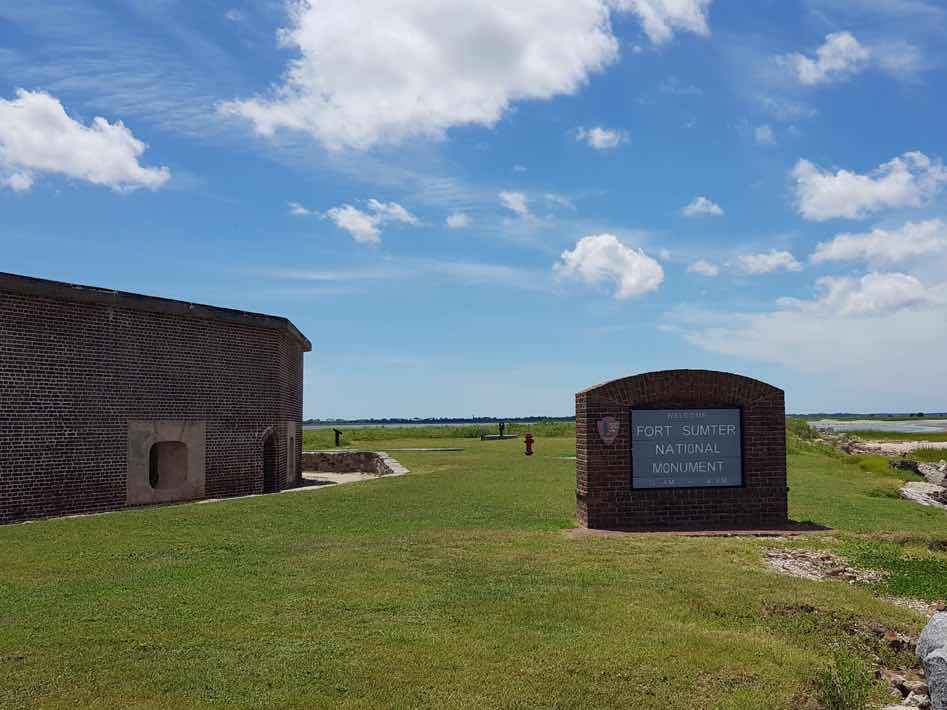
The well-preserved national monument at Fort Sumter.
Where it began: The American Revolutionary War
The best place to start untangling events was with the Revolutionary War. The thirteen original American colonies decided to form the United States and rebel against the British rule. Under George Washington, they declared their independence on July 4, 1776. This was eventually recognised seven years later at the Treaty of Paris in 1783.
To keep the colonies united during the revolutionary period, the original United States Constitution was very careful not to directly mention the issue of slavery. Slavery was already a divisive issue. Many northern states believed it would fade out in time as the nation developed. However, the southern states were solely reliant on agriculture. Slave labour was essential for healthy profit margins. So, slavery was not something the southerners wanted to let go easily.
The Atlantic slave trade was banned in 1807 but by then there were enough slaves on US soil to sustain a domestic trading of slaves. At the time this was still very legal depending on which state you were in. Charleston was one of the main trading centres for both international and domestic slaves. They were herded like cattle into slave markets like this one that now acts as a museum in downtown Charleston.
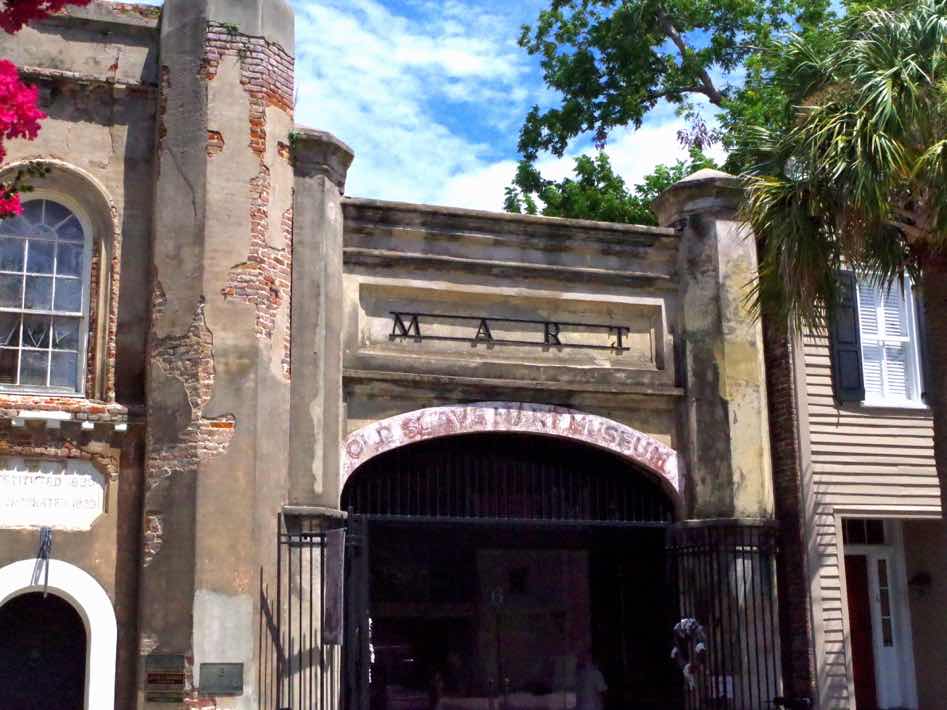
The Slave Market Museum in Charleston tells of the horrific trading of slaves conducted in Charleston during the 1800’s.
North vs South Economics
The United States flourished in the first half of the 1800’s and the population boomed. However, the economic interests of the individual states grew further and further apart. The south generally relied on agriculture. The north generally on industry and manufacturing. The south relied on slavery and cheap manufactured imports from Europe. The north wanted tariffs on European imports so they could sell more of their manufactured goods locally.
State Unity vs Slavery
Apart from economics, slavery remained a divisive social issue. The federal government continued to avoid passing any laws regarding slavery. The unity of the states was still considered of greater importance. In fact, the federal government had little impact on the day to day life of a US citizen at the time. It was mainly the local and state laws which had more immediate relevance. The individual states began to define themselves as either free or slave states dependant on their own economic interests. Individually though, there were people in all states either supporting abolition, containment or expansion of slavery.
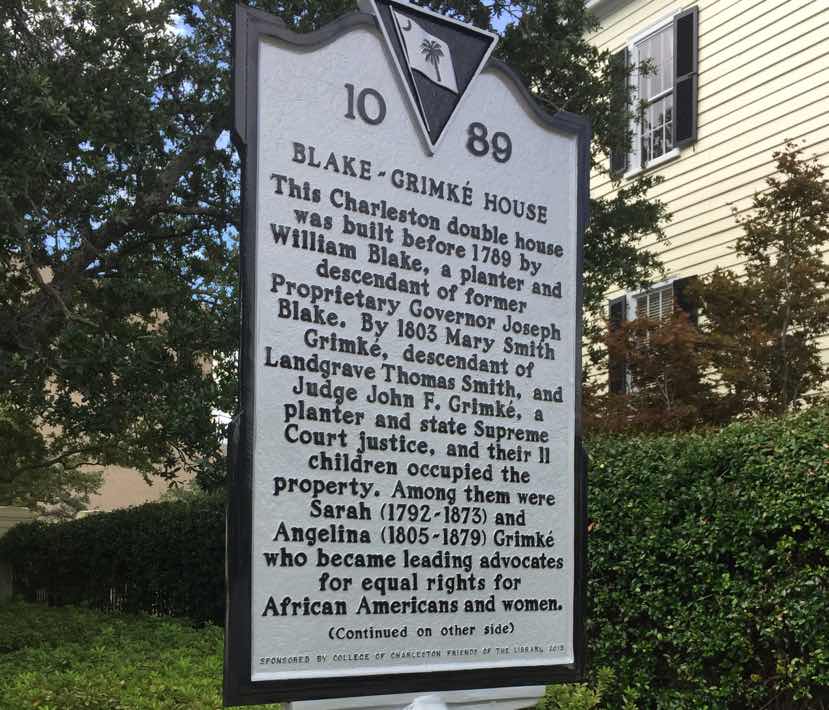
People such as the Grimké sisters had grown up as daughters of a South Carolina plantation owner. Later, they were actively against slavery and worked to influence its abolition. This sign appears in downtown Charleston outside their once family home.
Abraham Lincoln was elected president on November 6, 1860. He was elected on policies which were seen by the south to be against slavery and supporting northern economic interests more than their own. Although, by his own admission, Lincoln’s focus, at least to begin with, was ultimately on protecting the union of the states.
“My paramount object in this struggle is to save the Union and is not either to save or to destroy slavery. What I do about slavery, and the coloured race, I do because I believe it helps to save the Union.”
– President Abraham Lincoln, August 22, 1862
The south, particularly South Carolina, still feared this was the end of life as they knew it.
South Carolina & Succession
South Carolina and the Charleston harbour was a crucial trading port in the south. The lucrative crops at the time, rice and ‘king’ cotton, meant some of the richest and most influential people in the United States lived in South Carolina. Upon Lincoln’s election, many of these felt South Carolina needed to separate from the union in order to continue their business as usual.
South Carolina withdrew itself from the United States on December 20, 1860. This was prior to Lincoln’s inauguration on March 4, 1861. This gap between election and inauguration was crucial as South Carolina was able to get the upper hand. It convinced Mississippi, Florida, Alabama, Georgia, Louisiana, and Texas to also withdraw from the ‘Union’. They formed the Confederate States of America. All before Lincoln officially came into power.
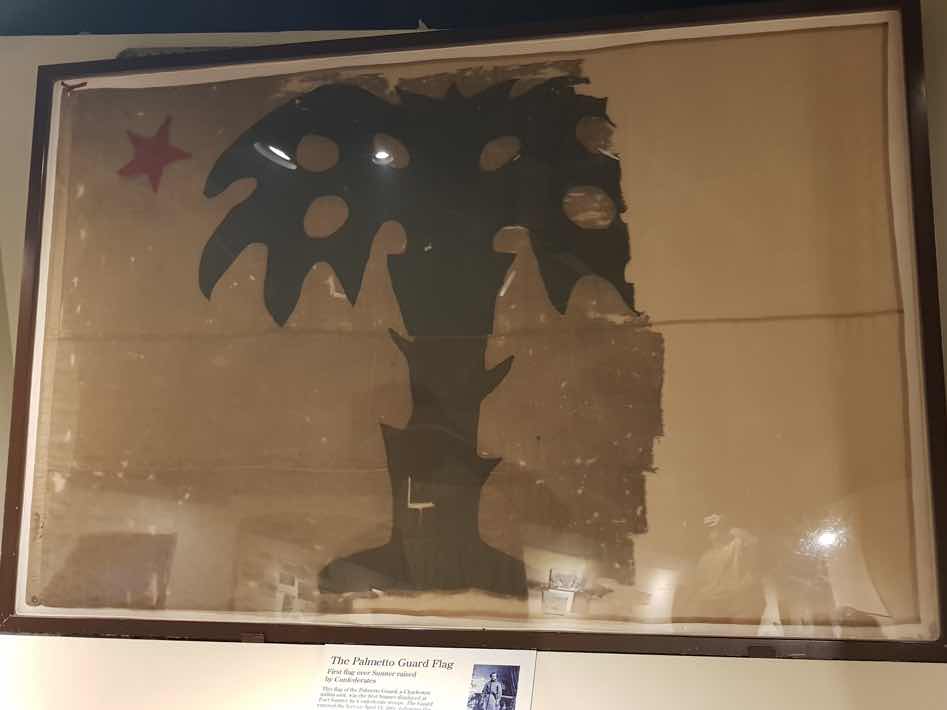
The Palmetto flag was used by South Carolina after it withdrew from the United States and initially represented territory now under Confederate command.
Charleston Implodes
Charleston harbour was protected by four strategic locations. Castle Pinckney, Fort Johnson, Fort Sumter and Fort Moultrie. Major Robert Anderson led US Federal forces in Charleston and was in command of all four forts. Upon the South Carolina succession Anderson feared a revolt from the local militia forces, ironically these were men he had personally trained. Less than a week after South Carolina’s withdrawal on December 20, he consolidated all his men in the more solid, yet unfinished, Fort Sumter.
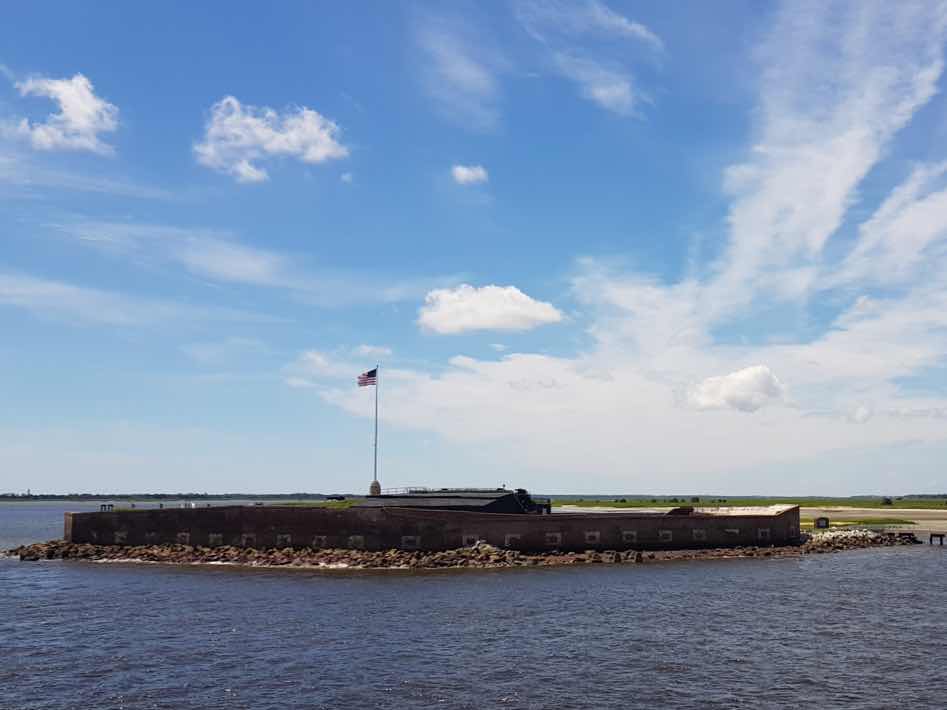
Fort Sumter was the last strategic stronghold by union forces before it was attacked by the Confederate militia.
The local militia army quickly occupied the three vacated forts left by Anderson. Over the next 3 months, they built plans to remove Anderson completely and take control of Charleston harbour. Their intentions became clear when a Union supply ship Star of the Sea was turned back by Confederate forces. This was arguably the first official skirmish of the civil war.
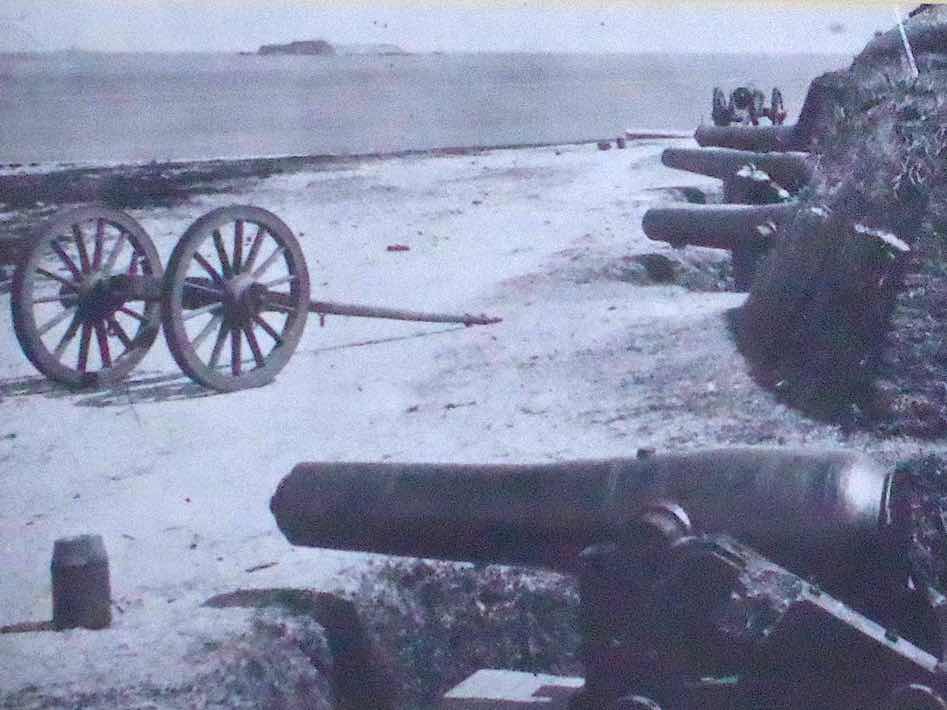
The view to Fort Sumter from Fort Johnson in 1861. Apart from the canons, it is much the same view today.
History states though that at 4:30 am on April 12, 1861, Confederate Captain George S. James, militia commander at Fort Johnson, ordered a single cannon shot to fired high into the dawn air and to explode over Fort Sumter. This is the first officially recognised shot in the civil war.
This signalled to the surrounding forts to open fire on Fort Sumter. Anderson and his men fought back for two days while the residents of Charleston watched from their balconies with the smell of gunsmoke in the air. Late on the second day, Anderson surrendered on the condition he and his men be free to return to New York.
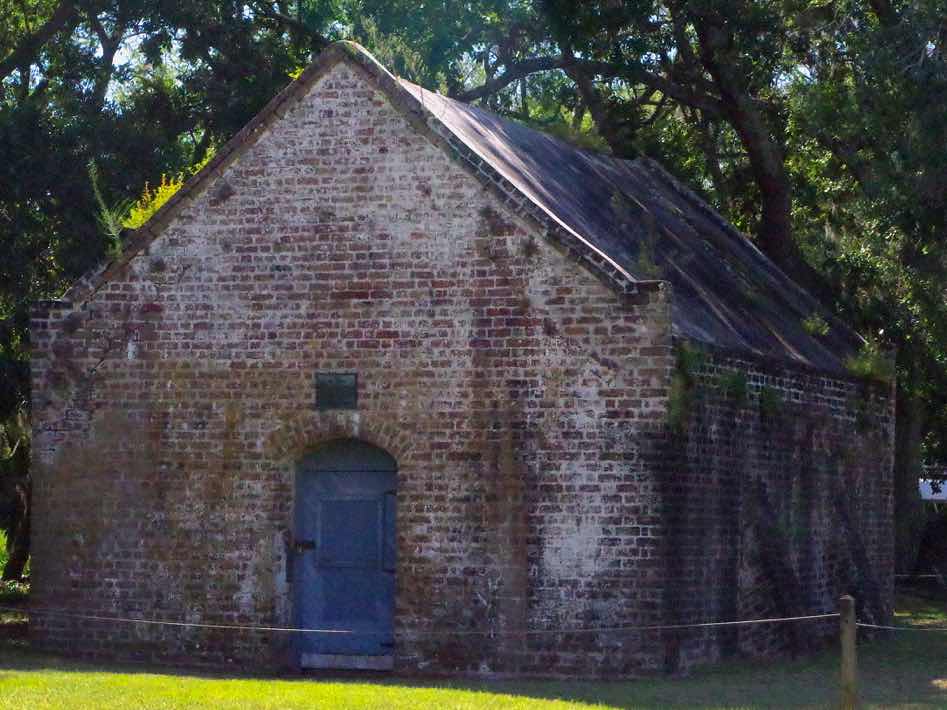
The remaining powder magazine left at Fort Johnson. The only remains of the fort that fired upon Fort Sumter.
The Aftermath of Fort Sumter
This battle was the final straw for the now inaugurated President Lincoln. He called all remaining states in the union to send 75,000 troops for an expected 90 days to take back the Charleston forts and end the Confederate revolt against the Union. In the end, it involved over 3 million troops, took more than 4 years to resolve and cost over 1 million lives, including his own. Amendments to the constitution would, eventually, be made to make the practice of slavery illegal in all states.
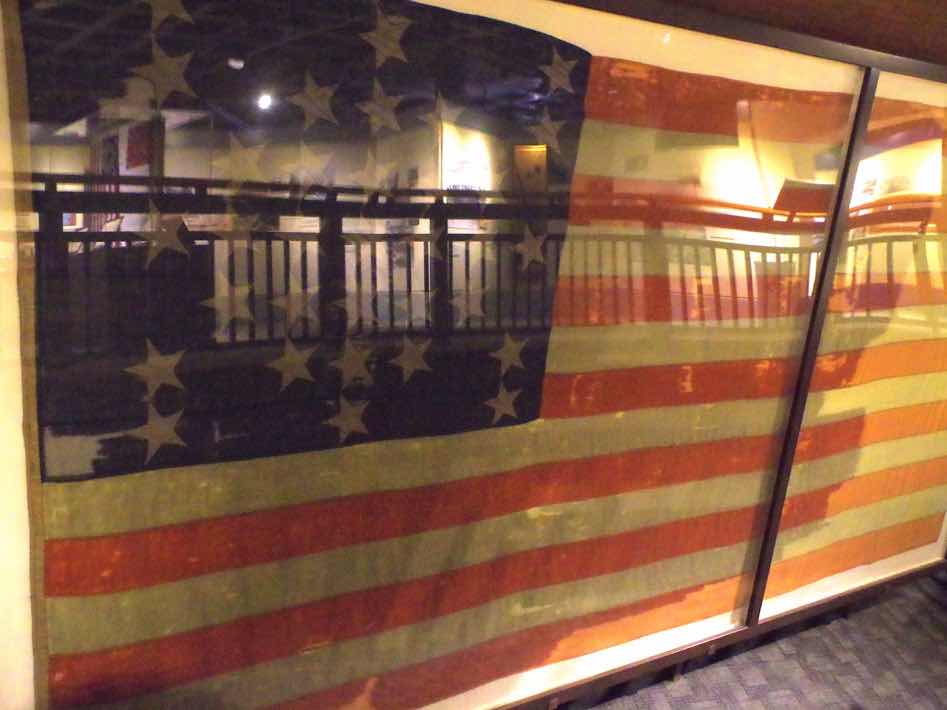
This union flag was taken by Major Anderson back to New York after the defeat of Fort Sumter, then reflown once the Fort was returned to Union forces in 1865.
While the single shot from Fort Johnson began an inevitable conflict, it is surprising not more of a fuss is made about preserving a location so pivotal in US history. Historians claim the fort has been washed away in successive hurricanes. One may instead suspect the United States was reluctant to glorify such a revolutionary action nor were South Carolina likely to highlight an eventual defeat. In any case, such a memorial may provide a timely reminder that a united nation always has the potential to turn upon itself.












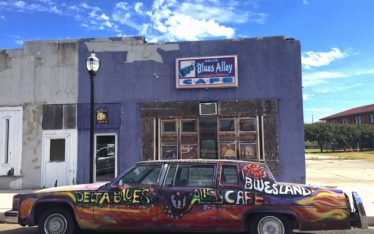

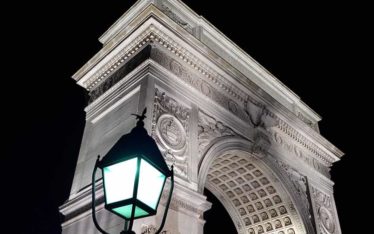
About The Author
Warren
Ever since venturing out the back gate into the bush as a kid, I've had a curiosity to escape and explore as often as I could. It's fair to say that my curiosity has continued to grow instead of fade as the years go on. It eventually came time to turn a few scribbled notes into some legible stories and travel tips for anyone with a similar curiosity as me.